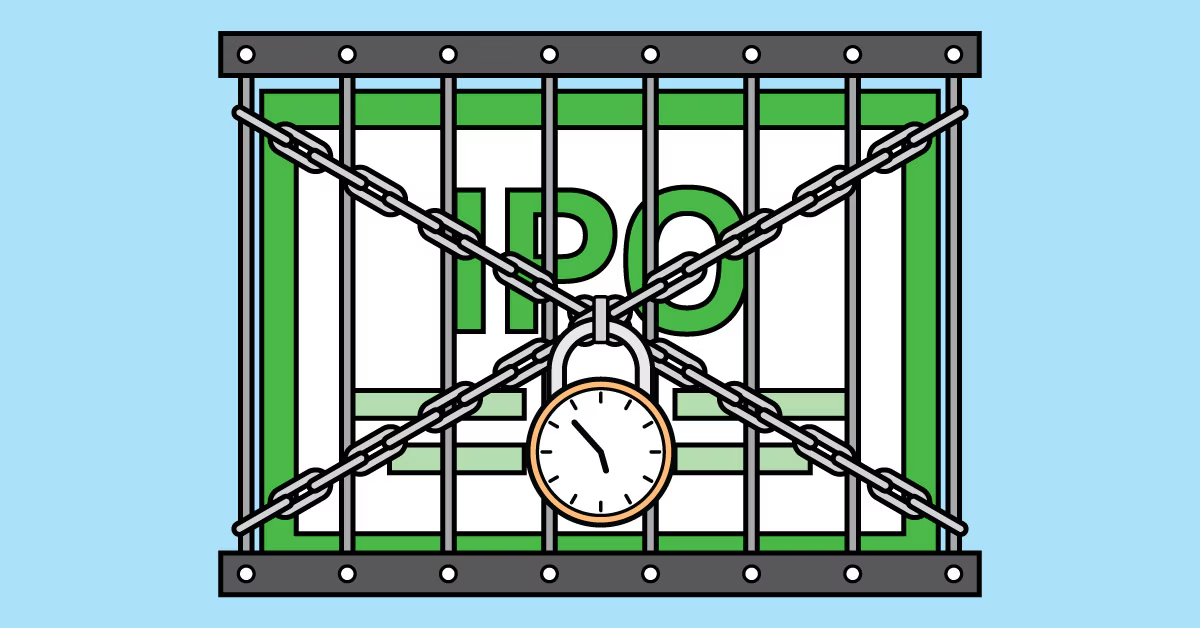
An IPO is a target for every person in charge of a venture or startup business. Among those supervisors, you are someone who doesn’t even know what a “lockup” is, even if you have heard the word. That may be the case for certain individuals. If you are unfamiliar with an IPO Lockup, you could realize an IPO and encounter unanticipated difficulties, such as unintentionally breaking the lock-up.
Also Read:-
IPO Allotment Strategies: 8 Tips to Increase Your Chances of IPO Allotment
Definition and Purpose IPO Lockup
When a company’s shareholders are getting ready to go public and the business is working toward an IPO, this is known as a lock-up. A rule or agreement that, following an IPO, prohibits the issuance of new shares and the sale of existing shares, including unknown shares. A significant portion of shares in a company getting ready to go public before its initial public offering (IPO) is typically held by investors (founders, executives/employees, entrepreneurs, etc.) at lower prices compared to the cost of the public offering at the time of listing. These stocks are owned by a large number of people, therefore there is a motivation to sell them soon and lock in profits. Selling pressure, or the likelihood of selling pressure, could arise if there’s a chance they’ll make big sales right after the IPO. This could seriously harm the growth of steady stock prices. Lock-ups are designed to discourage short-term financial gain, to discourage acts that significantly impact the supply and demand balance of the stock market right after listing, and to promote steady stock price formation. The prospectus, equities registration statement, and other materials that are released upon listing approval will contain information about the specifics of a company’s lock-up during an initial public offering (IPO). This is a mechanism that prevents large investors, like founders and investment capitalists who already possess shares, from selling their investments in the market for a specified amount of time following the public offering or transfer of shares. A decrease in the stock price may occur if a stock sells off dramatically right after becoming public. By preventing big shareholders’ share sales from aggravating supply and demand, this mechanism ensures that any lockup is disclosed before listing.
Also Read:-
Complete Guide to IPO Grey Market (GMP): How It Works, Risks, Kostak Rates and Trading Strategies
The connection between lockup and IPO investment
IPO stands for “Initial Public Offering”; it is often referred to as an initial public offering. This entails allowing a broad variety of shareholders to participate in the listing of an unregistered company’s shares on the stock exchange, that were previously owned solely by a small number of shareholders, including the founder. The shares are then made accessible for trade on the stock market. Because the public offering price is usually set lower to ensure a smooth IPO, and if the company is a high-profile one going public, it’s probably because growth expectations are driving the price down, IPO investments are believed to be the easiest to make profits across stock investments. This is due to a number of factors, one of which is its ease of attraction to customers. As a result, the price after the listing is going to be higher if you purchase the shares of the IPO offering in advance (retaining the right to purchase it), and you could be able to profit from the difference. Following listing, the level of supply and demand among buyers and sellers sets the price of the stock. The stock price will increase if more investors wish to purchase, and it will decrease if additional investors want to sell. If you plan to invest in an IPO, find out if there is a lock-up in place to ensure this. The goal of initial public offering (IPO) investing is to turn a profit as quickly as possible, unlike regular stock trading, wherein supply and demand are determined by the number of sellers. IPO investment entitles you to purchase stock before it is listed and to offer it on the market after it is listed. This is so because consequences often follow achievement or failure.
Advantages of IPO Lockup
Lock-up is a mechanism designed to stop supply and demand from getting worse because large shareholders are selling their shares. We want to talk a little bit more about the benefits and importance of implementing a lockup. A specific percentage of shares could be purchased at a price below the public offering price by founders and investors who have owned the company’s stock since before it was listed. Should you possess such stocks, you could choose to sell them to secure your gains. There might be selling pressure and a higher chance of a stock price drop if significant owners lock in profits by selling their interests in bulk right after the IPO, or if it seems like they might do so.
Types of IPO lockup
Two types of lockups are available:
- Institutional lockup
- Optional lockup
Please read the following to ensure that you grasp the various enforcement capabilities and purposes of the things mentioned above.
Institutional lockup
Institutional lock-up refers to stock exchange-mandated IPO sales procedures. It is swapped in order to avoid stock price swings brought on by sales that occur soon after the public publication. This is a very trustworthy contract because it is written in compliance with stock market rules, guaranteeing that the asset won’t be sold.
Optional lockup
While voluntary lock-up isn’t dependent on systematic lock-up, it is an agreement that grants shareholders autonomy over IPO sales. It is employed when it is desirable to lower the danger of a stock price decline. It is a mutual agreement made between the shareholder and the main investor, and its enforcement is limited because it is up to the discretion of the other party.